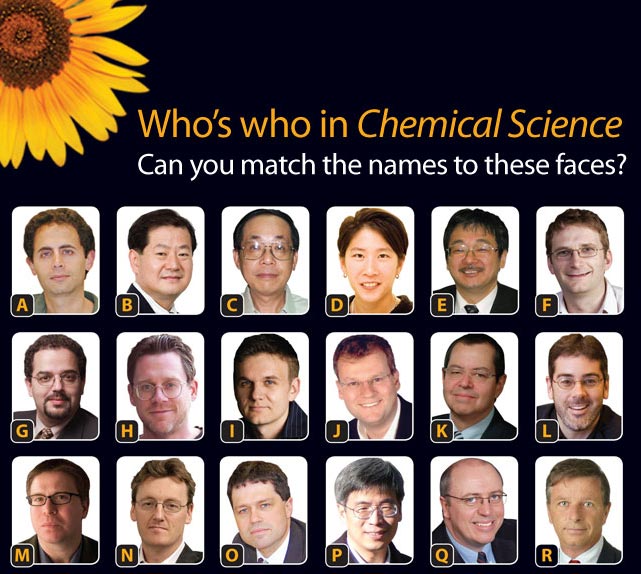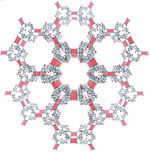We have 17 world-leading Associate Editors working with Editor-in-Chief David MacMillan to ensure that Chemical Science represents the new thinking from across the chemical sciences. But can you match the faces with the names? Number 1, David MacMillan, is N – but what about the others?
Post your answers below – all correct answers will be in with the chance of winning a prize …
| 1. David MacMillan, Princeton University, USA Editor-in-Chief |
| 2. Chris Bielawski, University of Texas, Austin Associate Editor: Polymer Science |
| 3. Stephen L Buchwald, MIT, USA Associate Editor: Organic Chemistry |
| 4. Thomas Carell, Ludwig-Maximilians-Universität München, Germany Associate Editor: Chemical Biology and Bioorganic Chemistry |
| 5. Benjamin F Cravatt, Scripps, USA Associate Editor: Chemical Biology |
| 6. Christopher C Cummins, MIT, USA Associate Editor: Inorganic and Organometallic Chemistry |
| 7. Kazunari Domen, University of Tokyo, Japan Associate Editor: Physical Chemistry, Energy and Surface Science |
| 8. Matthew Gaunt, University of Cambridge, UK Associate Editor: Organic Chemistry |
| 9. Hubert Girault, Ecole Polytechnique Fédérale de Lausanne, Switzerland Associate Editor: Analytical Science |
| 10. David A Leigh, University of Edinburgh, UK Associate Editor: Supramolecular Chemistry |
| 11. Kopin Liu, Academia Sinica, Taiwan Associate Editor: Physical Chemistry |
| 12. Jeffrey R Long, UC Berkeley, USA Associate Editor: Inorganic Chemistry |
| 13. Wonwoo Nam, Ewha Womans University, Korea Associate Editor: Bioinorganic Chemistry |
| 14. Colin Nuckolls, Columbia University, USA Associate Editor: Organic Materials |
| 15. Teri Odom, Northwestern University, USA Associate Editor: Nanoscience |
| 16. Matthew J Rosseinsky, University of Liverpool, UK Associate Editor: Inorganic Materials |
| 17. F Dean Toste UC Berkeley, USA Associate Editor: Organic Chemistry |
| 18. Haw Yang, Princeton University, USA Associate Editor: Physical Chemistry |
Five prize-winners will be selected at random from winning entrants who have supplied a valid email address with their correct entry. Competition closes at 24.00 GMT on 30th April 2011. Winners will be notified by email.













